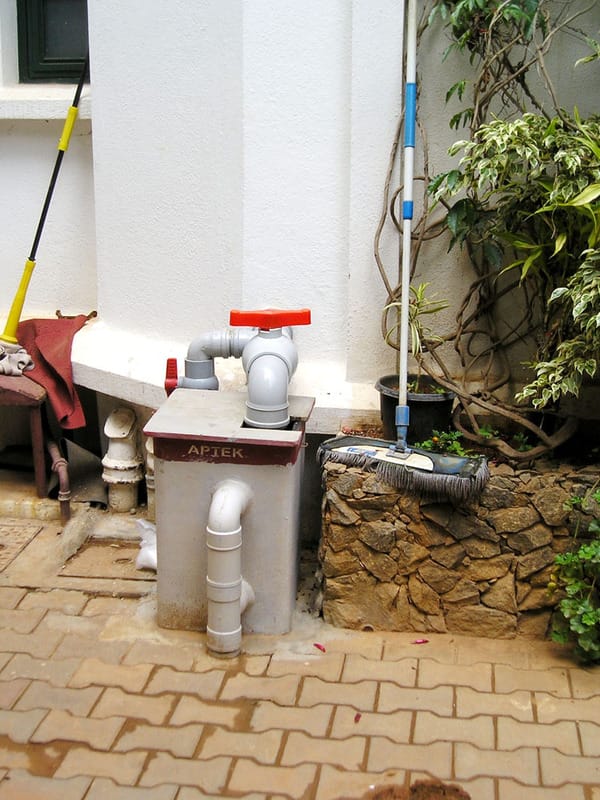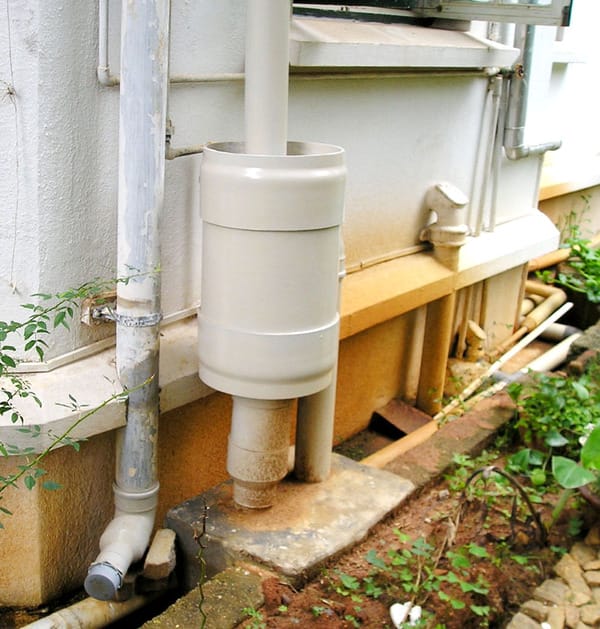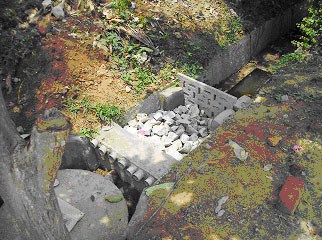The first two parts of this series dealt with arriving at a broad layout-level strategy for rainwater harvesting (RWH) and how to engage the residents and decision-making bodies of the layout to move the strategy forward.
When engaging with residents, one will inevitably face many questions about why people should consider rainwater harvesting (RWH), how the systems are constructed and how they work. The following discussion concentrates on how to address these FAQs, first focusing on general RWH questions and then on more technical questions related to RWH for direct storage and groundwater recharge.
Rainwater Club
rainwaterclub [at] gmail [dot] com
1022, 1st Floor, 6th Block, HMT Layout
Vidyaranyapura Main Road,
Vidyaranyapura,
Bangalore – 560 097
Office – 80416-72790
www.rainwaterclub.org
In addition to the FAQs, we have shot dozens of videos about RWH in multiple languages and contexts, and encourage you to take some time to look through them on YouTube to get a visual sense of the how and what of RWH. We also encourage you to direct the residents of your layout to do the same.
General FAQs
What is RWH?
RWH is simply the act of capturing rainwater and either storing it for use or recharging it into the ground. RWH helps households in securing their water supply, reducing their dependence on piped / tanker / borewell water and can significantly reduce the intensity of flooding during the rainy season.
How does RWH work?
Rainwater can be broadly harvested in two ways:
- Rooftop RWH with direct storage – rainwater on terrace areas is brought down using down pipes. This water is then passed through a filter and stored for consumption in an appropriate storage (eg: sumps or rain barrels)
- Groundwater recharge – water from the storm water drains, paved and unpaved, is redirected into what is called a recharge well that percolates the water to the groundwater aquifer.
Why should we do RWH?
Some arguments for RWH are applicable to most situations.
Bangalore is growing at an unprecedented rate, and its sprawling expansion outpaces the public utility’s ability to accommodate skyrocketing demand for water and sanitation services. It is increasingly common for new residential communities to assume total management for their own water and sanitation services through their resident welfare associations. Most of these depend on borewells and tankers, which they sooner or later realize is not a sustainable option. Rainwater harvesting, including rooftop collection for domestic use and groundwater recharge, can be instrumental in efforts to achieve long-term water security.
Some basic figures on the anticipated yields of RWH interventions can be quite persuasive. The following table describes the amount of water that can be harvested for direct storage from average-sized and larger household rooftops:
|
Catchment description
|
Harvestable roof area (sqm)
|
Expected annual rainwater harvesting capture (based on avg Bangalore rainfall of 970mm)(L)
|
Expected capture after avg rain event of 30 mm (L)
|
Expected capture after heavy rain event of 60 mm rain (L)
|
|
Rooftop for a standard 30’ x 40’ home
|
112
|
97,000
|
3,000
|
6,000
|
|
Rooftop for a 40’ x 60’ home
|
220
|
1,95,000
|
6,000
|
12,000
|
To put these figures in perspective, a family of four living in a 30×40 home can expect to have fully four to five months of its water needs met by rainwater alone, and five to six months’ water requirement can be met for a family of four in a larger 40×60 home.
Investing in RWH in the form of groundwater recharge provides additional benefits. By taking water out of over-stressed storm drains and replenishing them into shallow aquifers, groundwater recharge wells effectively raise water tables and reduce the intensity of flooding in a layout. Considering a layout of 30 standard-sized houses where no rooftop RWH systems have been installed, each year nearly 2.9 million litres of water will run off from the roofs into the layout’s storm drains. This figure doesn’t even include the amount of water running into the storm drains from roads and open spaces!
How much does it cost and how long does it take to build?
On average, costs for retrofitting a home with a rooftop RWH system and direct storage typically range from INR 20,000/- to 50,000/- for houses on plots of up to 60X40 sites. The cost ultimately depends on site conditions and consumer preferences, such as whether to store water in an existing tank, such as a sump, or to purchase a new rain barrel (more on this below). For new constructions, if the planning is done upfront, the incremental costs due to rainwater harvesting will be insignificant. Construction is typically completed in one to two weeks depending on the project size.
A typical groundwater recharge well costs in the order of INR 25,000/-. Costs may be slightly higher for larger plots. Construction can be completed in a matter of days.
Please note that the cost ranges cited here are highly subject to changes with inflation, change in material costs and labour rates.
Is it safe to drink rainwater?
Yes. Rainwater is the purest form of water and if a layout is free of contamination sources such as excessive plant or animal life that can litter rooftop catchments, and if the owners of rooftop RWH systems regularly sweep their terrace and periodically clean their filter, then the water will be safe for all purposes including drinking and cooking when run through an Aquaguard or other household filtration system. Nevertheless, we highly recommend that prior to consuming water from an RWH system, the owner first test their water for potability by sending a sample to one of the city’s several testing labs.
As for water replenished to the groundwater aquifer through recharge wells, there is no better filtration system in nature than the earth’s soil. If residents make sure to maintain the cleanliness of their storm drains from solid and liquid waste, then the water recharged will be perfectly safe to consume.
How are RWH systems built?
Implementing RWH in existing dwellings can be done ensuring minimum disruption to the home’s structures. Retrofitting RWH need not involve any re-roofing or major works, and for new constructions, RWH can be integrated into the design plans.
In the case of a rooftop RWH system retrofit, all dwellings already have pipes to drain the rainwater from the terrace areas. These down-take pipes will be attached to additional piping that leads the rainwater through a filter and then into a storage tank such as an existing sump or a new rain barrel. In the case of rain barrel storage, a platform will be built on which the barrel can rest so that buckets or other water-gathering vessels can fit beneath the tap at the bottom of the barrel.
Groundwater recharge wells are built either in storm drains, in open areas such as parks, or in the yard of large plots. In one to two days, a well-digger can create a hole 20-30 ft deep and line it with concrete rings. The well will then be finished with minor masonry work and covered with either a steel grating or a solid concrete slab.
How do we maintain our RWH system, and how much does it cost?
The work involved in maintenance is negligible. The tasks include the following:
- Once after each rain or two, the owner will need to open by valve or end cap a chamber called the first rain separator to let out the water collected from the first few minutes of rain. This water tends to be dirty and is not suitable for consumption, which is why it is collected in a separate chamber and not allowed into any storage structure.
- Rinse the sand/gravel and jelly stone that make up the filter media once every 6 months.
- Replace the filter media once in two years.
- In the case of a recharge well, it will need to be de-silted every five years.
Technical FAQs – Rooftop RWH with Direct Storage
Tell me more about direct storage of rainwater
In this method, the rainwater is captured, filtered and used for regular purposes. As the rainwater is the purest form of water, provided one can keep his/her roof clean, rainwater can act as an excellent source of clean water for more than five months in a year in a city like Bangalore which is blessed with well distributed rainfall.
The following table provides a better perspective on the direct advantages of storing rooftop rainwater by showing the number of days RWH water can service a household’s water requirements given a certain storage capacity. Here we assume a standard 30×40 household with four members consuming 150 litres each per day.
|
Roof Area (square metres)
|
112
|
|
|
Daily water consumption (litres)
|
600
|
|
|
Total harvestable water (litres)
|
97,765
|
|
|
Storage Tank Size (litres)
|
Days Serviced by Rainwater
|
Total Water Stored Annually (litres)
|
|
3000
|
103
|
61701
|
|
4000
|
115
|
68701
|
|
5000
|
123
|
74035
|
|
10000
|
151
|
90671
|
|
12000
|
158
|
94671
|
|
15000
|
162
|
97351
|
|
20000
|
162
|
97351
|
|
25000
|
162
|
97351
|
This table illustrates a couple of important points. Firstly, with just 5,000 litre storage tank, a household of four will be able to meet 120 days of its water needs on rainwater alone. The other point is that after a certain point, the increase in days serviced by rainwater does not correspond with the increase in storage tank capacity. The point of this is that the biggest available tank isn’t necessary the best value for the household, so it is important to speak with a knowledge RWH expert about the ideal storage size given the conditions at the implementing household.
The two most common ways to store water are in an existing sump tank or in a rain barrel. Storage in an existing sump is preferable when a homeowner is willing to use rainwater for drinking and cooking. The plumbing to direct filtered rainwater into a sump is relatively simple and unobtrusive, and the overall system is less expensive to the homeowner than building a new storage structure.
If the homeowner is not willing to drink rainwater or if the site conditions don’t permit, rainwater can be stored in a rain barrel and used for secondary uses like washing, gardening and other purposes.
What is a filter? What does it contain?
There are two aspects of filtration in the context of RWH. The rain falling on a terrace during the first few minutes is stored in a chamber called the first rain separator because that water typically carries with the dust and organic matter that gathered on the terrace after the previous rainfalls. Once the first rain separator fills, the additional rainwater is passed through a filter cased in PVC plastic or Ferro cement. The filter contains layers of media, which can include graded metal, sand/gravel, plastic mesh and and/or charcoal to remove organic matter, physical impurities and smell if any. The appearance and contents of the filter can be customized in depending on site conditions. Shown below are examples of the different filters described above.

Filter – Ferro cement casing

First rain separator with end cap and filter with PVC casing
Technical FAQs – Groundwater Recharge
Tell me more about groundwater recharge.
Groundwater recharge can be done either at the individual household level or at the community level. The recharge wells are basically wells sunk with concrete rings to stabilize the soil. The concrete rings are perforated and the bottom of the well is unlined so that there is maximum percolation into the earth. A typical recharge well of 3 feet diameter and 20 feet deep can hold 4000 litres of water and that will typically take about 2 days to percolate in sandy soils.
A) At the household level
At the household level, either all of the water from the rooftop or the overflow from the sump or rain barrel (where a direct storage system has been built) can be fed into a groundwater recharge well. In some cases, the well may even start yielding water after a few years and may be used as a draw well for gardening or clothes washing.

Diagram indicating how recharge wells work in Bangalore’s geological setting.
Investing in RWH in the form of groundwater recharge provides additional benefits. By taking water out of over-stressed storm drains and replenishing them into shallow aquifers, groundwater recharge wells effectively raise water tables and reduce the intensity of flooding in a layout. Considering a layout of 30 standard-sized houses where no rooftop RWH systems have been installed, each year nearly 2.9 million litres of water will run off from the roofs into the layout’s storm drains. This figure doesn’t even include the amount of water running into the storm drains from roads and open spaces!
B) At the community level
Extensive recharging is generally taken up at the community level or in the common areas of layouts and apartments. In a given gated layout or apartment complex, there tends to be a large amount of runoff from paved and unpaved common areas. This water moves toward storm drains and natural depressions in the earth, and directing it into recharge wells raises the groundwater table and can potentially improve borewell yields. Perhaps even more significant depending on the layout, extensive groundwater recharge can play a major role in reducing flooding during heavy rains.
Because layouts tend to be designed to route maximum water into the storm water drains, a great place to sink a recharge well is in the drain itself.
Where should we locate community-level recharge wells?
Initially, the layout grounds must be studied to arrive at the number of recharge wells required. The preferred number of wells depends on a number of factors and is best discussed with an experienced RWH expert. Then, the topography must be thoroughly studied to locate valley points, which are the ideal locations for wells because they receive the greatest amount of runoff water. A benefit of storm drain recharge wells is that they consume very little, if any, real estate outside of the storm drain itself.
What does a storm drain recharge well consist of?
See below is a photo of a storm drain recharge well. Starting from the upper right-hand corner of the photo, you see a small trench called a de-silting chamber, where some of the silt picked up by water running through open areas can settle. Next is a concrete grate to prevent solid waste such as garbage from clogging the pipes of the recharge well. Following that is a bed of stones to filter out more silt and waste from the water, after which is a low-lying concrete wall with flow pipes at the top called a check dam. Lastly is the recharge well itself, which is covered by a concrete slab. To enter the well, water must first pass through a plastic mesh sheet called netlon that filters out any solid waste that was not removed through any of the earlier filtering methods. Once in the well, the water can percolate into the ground, and in case the amount of water from a particular rainfall is greater than what the recharge well can accommodate, there is an overflow pipe on the other side of the recharge well (not in picture) to prevent excessive water build-up around the well itself.

Groundwater recharge well in a storm drain (Pic: Rainwater club)
Coming next
Part 4: Creating an environment that incentivises RWH – In the next and final instalment, we will explore the kind of financial and social interventions that can help create an environment amenable to rain water harvesting and maximize the uptake of different RWH strategies. ⊕
Hi, thanks for the details. I would like to do rain water harvesting in our villege both for home and agricultural land. Do you reccomend any service providers who can survey and estimate the cost of setting it up?
Thank you.